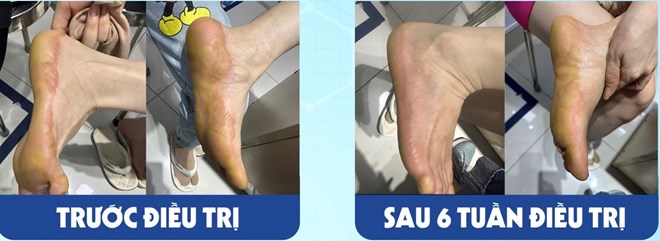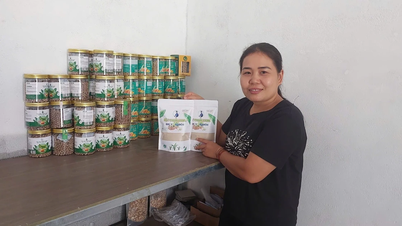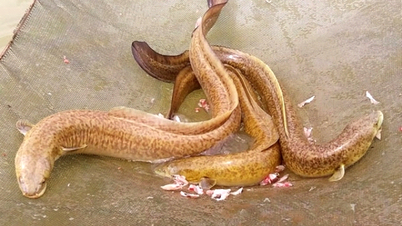
I can't remember how many times Nguyen Thi Thanh Hien (name changed, 39 years old, Binh Dinh province) burst into tears because of her fungal skin.
According to Ms. Hien, she has had a tendency to sweat a lot on her hands and feet since she was a child, so her family took her to many places for treatment but there was no improvement. There was a time when she went to a traditional medicine dermatology and cosmetic clinic with the reason that her soles were thick and itchy at night and early in the morning for more than 2 years. Here, she was treated by a doctor with topical antifungal medication and systemic antifungal medication but there was no improvement. The condition of thick skin caused Ms. Hien to have less sensation on the soles of her feet and to be self-conscious about her appearance.
“I often stay up late because I feel hot and restless, I like to drink cold water and my skin is prone to acne and dark spots,” Ms. Hien added.
At the University of Medicine and Pharmacy Hospital in Ho Chi Minh City, Ms. Hien was diagnosed by the doctor with hyperkeratosis, many scratches, cracks between the toes, prominent skin folds, little flaking and red edges spreading to the edges of the soles of the feet, both inside and outside.
Master - Doctor Nguyen Thi Quy - Traditional Medicine Dermatology - Aesthetic Clinic, University of Medicine and Pharmacy Hospital, Ho Chi Minh City (branch 3) said that the patient was diagnosed with blood stasis fungus and used oral herbal medicine combined with foot bath using herbal formula. After 1.5 months, the patient's skin condition stopped itching, keratosis reduced, and she began to feel the soles of her feet.
Tinea pedis is usually characterized by itchy scales and ulcers between the toes. Some patients may have areas of hyperkeratosis with erythema on the medial, lateral, and soles of the feet. Occasionally, painful blisters may appear, and tinea corporis, onychomycosis, and dermatophytosis may develop.
Untreated athlete's foot can lead to cellulitis, pyoderma, and osteomyelitis, especially in patients with immunocompromised states, diabetes, or peripheral vascular disease.
According to Dr. Quy, in 70% of cases of foot fungus, they are able to penetrate keratinized tissues such as skin, hair and nails. This group of fungi can cause infection in any location on the skin, however, they most often affect the feet, groin, armpits, scalp and nails.
Factors that favor the development of more severe disease include hot and humid environments, wearing tight shoes for long periods of time, excessive sweating, and prolonged exposure to water.
Approximately 80% of patients with acute dermatophytosis respond well to topical antifungal therapy. However, the remaining 20% progress to chronic dermatophytosis, which is resistant to antifungal therapy.
Source: https://laodong.vn/suc-khoe/mac-cam-vi-co-lan-da-ca-sau-do-nam-1357584.ldo

































































































Comment (0)